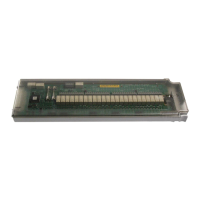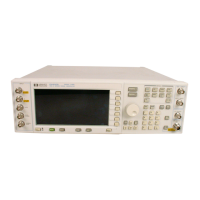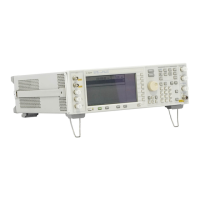1-83
Troubleshooting
Troubleshooting Non–Harmonic Spurious
Troubleshooting Non–Harmonic Spurious
There are nine different groupings a spur can fall into. The grouping determines what assembly is
most likely generating the spur. The procedure for troubleshooting spurs is to identify the grouping
based on failing a performance test, checking for loose or broken cables or castings, and replacing
the assembly.
Table 1-24
Mixing Spurs These spurs are generated by the mixing products of the RF and IF signals on the A8
Output. The instrument is tuned to a frequency in the Heterodyne-Band (250 kHz to
250 MHz) to measure these spurs.
Power Supply Spurs These spurs are generated by the power supply switching at a 100 kHz rate. If the
test fails for these spurs, change A19 Power Supply.
Offset Reference Spurs These spurs are generated by the 10 MHz frequency reference on the A7 Reference.
Clock Spurs Two clocks on the A11 Pulse/Analog Modulation Generator generate these spurs. The
first clock is 33.554432 MHz and is used by the numeric synthesizer. The second clock
is 100 MHz and is used by the internal pulse generator.
RF and LO Feedthrough Spurs When the instrument is tuned to a Heterodyne Band (250 kHz to 250 MHz)
frequency, the RF and LO feeds through from the mixer on the A8 Output generates
spurs on the RF output.
Frac-N Feedthrough These spurs are generated by the Frac-N frequency coupling onto the low-band signal
as it leaves the A6 Frac-N. The spurs then appear at the Frac-N frequency at the RF
output.
Sampler Spurs These spurs are generated on the A5 Sampler by the sampler LO and IF frequencies.
Frac-N 250 MHz Crossing Spurs These spurs are generated by either the A5 Sampler, A6 Frac-N, or A7 Reference.
They occur when a harmonic of the Frac-N frequency equals a harmonic of 250 MHz.
The spurs are measured in highband at 133 kHz offset from the CW frequency.
IF 250 MHz Crossing Spurs These spurs are generated on the A5 Sampler. They are caused by harmonics of the
A5 Sampler IF. The spurs are measured in highband at 133 kHz offset from the CW
frequency.

